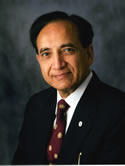| Abstract: |
Background: Current therapy for intermediate thickness melanoma involves wide local excision with sentinel lymph node biopsy (SLNB). SLNB provides important prognostic information and immediate regional lymphadenectomy for a positive sentinel lymph node (SLN) may improve survival and identifies patients who are candidates for adjuvant therapy and/or clinical trials. The head and neck site is unique because of its complex lymphatic drainage pattern to multiple nodal basins and because of the risk of site-specific morbidity associated with regional lymphadenectomy when compared to other body sites. The goal of this study is to report the results of SLNB for head and neck cutaneous melanoma in locating the sentinel node and to report on the prognostic implications of SLNB for this cohort of patients. Methods A prospectively entered melanoma database was used to review consecutive patients with head and neck cutaneous melanoma undergoing SLNB at Memorial Sloan-Kettering Cancer Center between 1996 and 2007. The database, along with a retrospective chart review, was used to evaluate the success of SLNB at locating an SLN and the success rate of frozen section and permanent section analysis at diagnosing metastatic disease. Recurrence at all sites including the nodal basin and status at last follow-up was recorded. Characteristics of the patients' primary melanoma were included. Descriptive statistics along with univariate and multivariate survival analysis were performed. Results Between 1996 and 2007, 234 patients with a diagnosis of head and neck cutaneous melanoma underwent SLNB and had at least 1 month of follow-up. At least 1 SLN was identified in 218 of these patients (93%) by lymphoscintigraphy. In 16 patients, no SLN was found. These patients had a much shorter time to recurrence (4.75 months) than either the SLN-positive group (10.7 months) or the SLN-negative group (26.0 months). They had a disease-specific survival (DSS) in between the SLN-positive and SLN-negative group. Of the patients in whom an SLN was identified, 28 patients (12%) had at least 1 positive SLN. Of these, the SLNs of 14 patients (50%) were identified on frozen section; 14 (50%) could only be identified after further sectioning or immunohistochemical analysis postoperatively. Among 190 patients with a negative SLNB, 12 patients had recurrences in the nodal basin. This resulted in a sensitivity of 70%, a negative predictive value of 94%, and a false-negative rate of 30%. The 3-year disease-free survival for SLN-negative and SLN-positive patients was 84% (p <.031) and 58% (p <.102), respectively. The 3-year melanoma-specific survival was 98% (p <.012) and 75% (p <.201), respectively. Conclusion The SLN status is an important predictor of survival. The technique, performed in the head and neck is complex and associated with a high false-negative rate. © 2010 Wiley Periodicals, Inc. |












